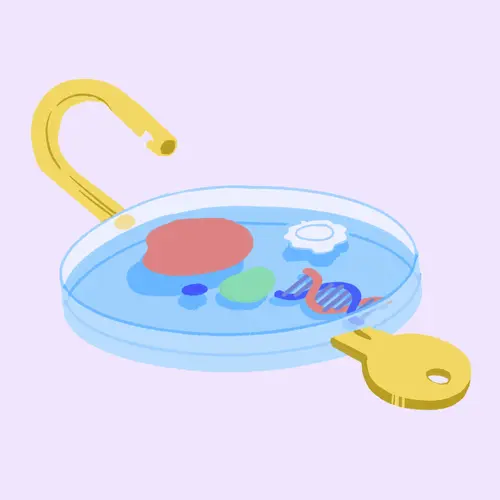Whether it's a cold in winter or allergies in spring and fall, nasal congestion and sinus pressure and pain are common complaints. But if you know the causes and can find the right treatments, you can breathe freely again.
1. Find Out What Causes Your Problems
Some people are just more prone to sinus problems than others. You may have narrow sinus passages or a deviated septum. Nasal polyps can also grow in your passages and block drainage.
Whatever the cause, it's important to keep those pathways open so they can drain properly.
Picture of the Sinuses
The sinuses are a connected system of hollow cavities in the skull. The largest sinus cavities are about an inch across. Others are much smaller.
- Your cheekbones hold your maxillary sinuses (the largest).
- The low-center of your forehead is where your frontal sinuses are located.
- Between your eyes are your ethmoid sinuses.
- In bones behind your nose are your sphenoid sinuses.
They’re lined with soft, pink tissue called mucosa. Normally, the sinuses are empty except for a thin layer of mucus.
The inside of the nose has ridges called turbinates. Normally these structures help humidify and filter air. A thin wall, called the septum, divides the nose. Most of the sinuses drain into the nose through a small channel or drainage pathway that doctors call the “middle meatus.”
Why do we have sinuses? Experts don’t know. One theory is that they help humidify the air we breathe in. Another is that they enhance our voices.
2. Make It Humid
A dry climate or heated indoor air will both dry out the membranes in your nose. And when the mucus up in there dries, it gets thicker and is more likely to clog your sinuses. The result? Pain and pressure.
The best solution: Get a room humidifier for your bedroom and use it while you’re running the heat.
3.Clean out the Gunk
Use a saline solution to remove allergens, irritants, and excess mucus. You can use a drugstore saline spray. Or make your own solution at home and use a nasal irrigation system like a Neti pot, a gadget that looks like a teapot. You can get one at the drugstore.
To make your own saline mixture, mix 3 teaspoons of salt with 1 teaspoon of baking soda and store in a sterile airtight container. To use, combine about 8 ounces of lukewarm water (distilled, sterile or previously boiled) with 1 teaspoon of the mixture. Be sure to use canning or pickling salt that has no preservatives, iodide, or other additives that can irritate your sinuses. If you feel burning, or if it seems too strong, dilute with extra warm water.
Put the mixture into a clean Neti pot. Tilt your head over your sink at a 45-degree angle. Place the spout into your top nostril and gently pour the solution in. The saline water will flow through your nasal cavity into the other nostril and out. Blow your nose to get rid of remaining water. Repeat the steps on your other nostril.
4. Open Things Up
Apply a warm, moist washcloth to your face several times a day. This can help open up spaces in your sinuses.
To keep them moist, inhale steam two to four times a day. One simple way to get it done: Sit in the bathroom with a hot shower running. You can also use a bioelectronic device that is available over-the-counter. It works using microcurrents on nerve fibers to help reduce symptoms of inflammation such as pain, headache, and congestion.
Drink plenty of fluids, too. That’ll thin out your mucus and help you get rid of it.
5. Clear the Air
Things in the air around you -- like pollution, cigarette smoke, cleaning products, hair spray, and any other material that gives off fumes -- can make your problems worse.
If you smoke, it’s time to quit. Stay away from other smokers, or ask them to take it outside. Also, stay inside on high air-pollution days if you can.
Should you get a HEPA air filter for your bedroom or office? That depends on what irritates your sinuses. These filters are good at removing airborne particles related to dust mites, pollen, and pet dander. But those don't just stay in the air. They settle in your carpets, upholstery, and other areas. If allergies cause your sinus problems, ask your doctor if a HEPA air filter makes sense for you.
6. Treat the Problem
Medications can help.
Decongestants reduce the swelling in your nose and can ease stuffiness and sinus pressure, too. You can get them in more than one form. Here’s what to look for on the ingredients list:
- Nasal sprays: oxymetazoline or phenylephrine
- Pills: phenylephrine or pseudoephedrine
A word of caution: Don’t use a nasal decongestant spray for more than 3 days, and don't use a decongestant you take by mouth for more than 7 days.
Pain relievers and anti-inflammatory medicine available at supermarkets and drugstores can help ease the pain caused by sinus pressure. Always read and follow the label and dosing instructions carefully. If you have to use them more than 7 days in a row, it’s time to call the doctor.
Nasal steroids ease a stuffy nose from allergies. They can also help treat nasal polyps. Some are available over the counter, including Flonase, Nasacort, and Rhinocort. Others are available by prescription only.
Antihistamine allergy medicines may help if your sinus problems are related to allergies. Over-the-counter products include cetirizine, diphenhydramine, fexofenadine, and loratadine. If your problems don’t go away, talk to your doctor about getting an allergy skin test.
If medications don't help, your doctor may tell you to see a specialist. You might need sinus surgery to remove polyps, scar tissue, and other things that keep your nose from draining like it should.

